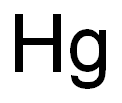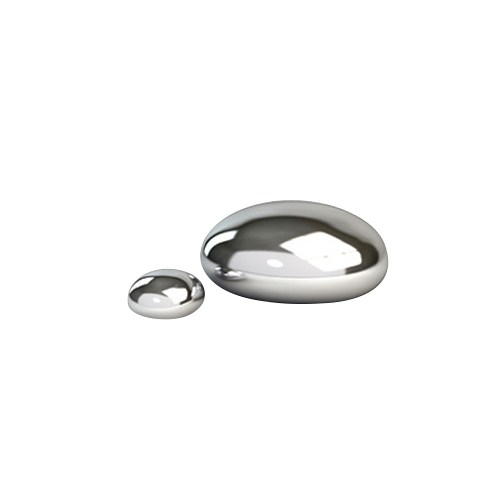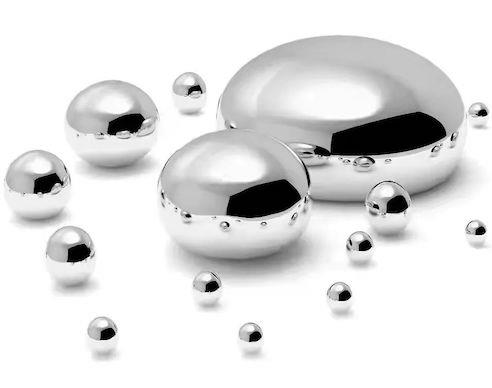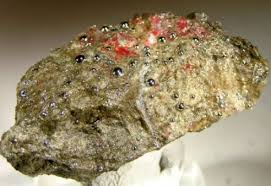Mercury - History and Drug-Application
Since around 500 BC, the mines at Sisapo in Almade´n (Arabic for the mine) in Southern Spain have been the principal source of Iberian cinnabar, red mercuric sulfide, which possesses a bright scarlet red colour that ensured its use throughout the ages as a pigment. Cinnabar was also the source of quicksilver, metallic mercury, which was of major importance to the alchemists. A scholarly account of the history of cinnabar and mercury by Goldwater has providedmuch of the information given here. He concludes that there is inadequate support for claims that either cinnabar or mercury were used medicinally in the ancient world by the Egyptians, Assyrians, Chinese or Indians. While mercury was prized above all other metals by the Indians, the date of its introduction into Indian medicine cannot be ascertained. Goldwater accepts that Hippocrates could have made use of cinnabar, but considers evidence of this is lacking.
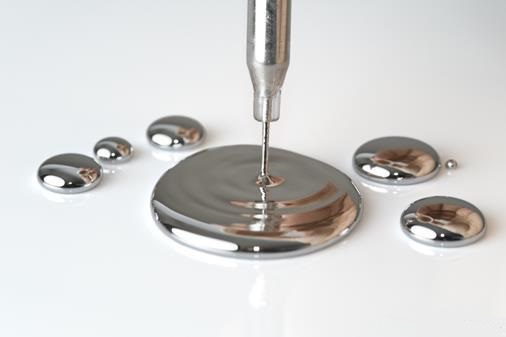
Cinnabar was mined by the Etruscans until banned by the Roman Senate, possibly late in the second century BC, due to the damage caused to vineyards, olive groves and streams.10 Pliny the Elder (AD 23–79), who gave a description of how mercury was obtained by roasting cinnabar, pointed out that the importation of the equivalent of 1000 kg of cinnabar from Spain each year had become so important to the Roman economy that the price had to be fixed by law.11 Several of the prescriptions given by Celsus in his De Medicina, which was written around AD 30, contain cinnabar. In the applications listed it was employed as a purgative, which indicates internal administration. Cinnabar was also incorporated in salves for treatment of the eye disease trachoma and of genital ulceration, which could have been a venereal infection. In the following century, however, Galen warned that cinnabar was so poisonous that he would not even sanction its external application.
The appearance of syphilis in Europe at the end of the fifteenth century saw desperate measures being taken to cure this new plague. The old medicines failed miserably and healers and afflicted alike were prepared to turn in any direction to find a cure. It was against this background of near panic that mineral medicines such as mercury salves became established as a standard treatment for syphilis. The first book about syphilis, variously known as Consillium in Morbum Gallicum, Consillium in Pustulas Malas or De Morbo Gallico, was written by Conrad Schellig, a professor at Heidelberg, perhaps as early as 1488 and certainly no later than 1496.9 The last page of his book warned that great caution must be observed when administering mercury by inunction. At least eight others before the year 1500 recommended the use of mercury in the treatment of syphilis, but its strongest advocate was Paracelsus. He wrote 11 books on syphilis in which he rejected the use of guaiac in favour of mercury. The term ‘syphilis’ first appeared in a revised version of a poem written in 1530 by the Italian physician Girolamo Fracastoro (1478–1553), in which the shepherd Syphilus is striken with the disease. The victim is advised to use mercury ointment: ‘Without hesitation, spread this mixture on your body and cover with it your entire skin. . . . Ten days in succession renew this treatment . . . very soon, you will feel the ferments of the disease dissolve themselves in your mouth in a disgusting flow of saliva. . . .’
This allusion to the flow of saliva reveals the rationale behind mercury inunction. Salivation was one of the many ways in which to expel harmful humours. This was clearly stated by the French surgeon, Ambroise Pare´ (1510–1590): ‘Verily we must so long use frictions and inunctions, until the virulent humours be perfectly evacuated, by spitting and salivation, by stools, urine, sweat or insensible perspiration.
The influential seventeenth century London physician Thomas Sydenham (1624–1689) was similarly convinced that mercury cured syphilis through its ability to induce a profuse flow of saliva. This was still held to be true even in the middle of the nineteenth century, when Jonathan Pereira, another renowned London physician, described it as ‘. . . the great value of mercurials’. It was only after Fritz Schaudinn and Erich Hoffmann in 1905 isolated the spirochaete which caused syphilis, Treponema pallidum, that the capacity of mercury inunction to induce salivation was finally recognised to be nothing more than an indication of mercurial intoxication. It is, however, quite plausible that if mercurial treatment had an effect, it may have required a toxic dose to produce any benefit, hence the observation was made that salivation was necessary before a cure could be effected. As to whether mercury inunction ever did cure syphilis, it is the opinion of Goldwater that we shall never know since modern standards of clinical investigation cannot accept the reliability of the many records of patients who may have had syphilis and who may have been cured, especially since the spontaneous remission of the disease even without treatment was commonplace.
The influential Pharmacopoeia Augustana, published in Augsburg in 1564, included monographs on Unguentum Mercurium cum Theriaca, an ointment in which mercury was mixed with fat and other ingredients. However, in 1582 the Augsburg Senate included mercury and all its preparations in a list of substances that apothecaries were not permitted to dispense. Nevertheless, mercury later appeared in the pharmacopoeias of London in 1618, Brussels in 1671, Lille in 1694 and Valencia in 1698, reflecting its widespread acceptance in the treatment of syphilis by inunction. In the following century Thomas Dover acquired the name of ‘the quicksilver doctor’ after he published a monograph that hailed mercury as a panacea for all ailments. His lack of restraint produced an inevitable backlash, with controversy raging throughout the second half of the century. However, at the end of the century mercury was still being frequently prescribed, with Johann Friedrich Gmelin devoting an entire volume of his Apparatus Medicaminum to mercurial preparations. The nineteenth century saw even greater enthusiasm for mercury as it was prescribed not only for syphilis but also for testicular disorders, hepatic disease, plague, pleurisy, purpura, peritoneal inflammation, erysipelas, cholera, chronic diarrhoea, amenorrhoea, eczema, hydrophobia, chronic brain diseases, typhoid fever, amaurosis and inflammation. During the first half of the twentieth century alternatives became available to deal with all the established conditions for which mercury had previously been prescribed.

Syphilis and the use of mercury
Notwithstanding, ointments containing mercury appeared in all the major pharmacopoeias until the 1960s. The British Pharmaceutical Codex of 1959, for example, included strong mercury ointment containing 30% metallic mercury in a base of wool fat, white soft paraffin and beeswax. This kind of formulation had been the standard treatment for syphilis since mediaeval times, with patients smearing large areas of their body with it in the hope of a cure. Even after the introduction of the effective antisyphilitic drug arsphenamine in 1910, mercury ointments were widely used. That they remained in existence after the introduction of penicillin is disturbing. In 1530, Paracelsus advised the city council of Nu¨ rnberg that mercury compounds should be taken in this way to treat syphilis. What became known as ‘blue pills’ were later widely used,especially after their composition was revealed by the pirate Hairedin Barbarossa to Franc¸ois I of France, who then published it. These pills remained popular until the end of the nineteenth century, and the British Pharmaceutical Codex of 1954 still included mercury with chalk tablets as a purgative for children. It was omitted from the next edition as a consequence of the belated recognition of the harmful effects of mercurous chloride in infants.
Paracelsus recommended as a purgative a preparation in which mercury coagulated with egg albumin was mixed with alum water and distilled to form a powder which was actually red mercuric oxide. This oxide is less chemically reactive than the more finely divided yellow oxide, which is the one that has generally been used for medicinal purposes. A popular eye ointment known as Pagenstecher’s ointment was introduced in 1865, which contained 12.5% yellow mercuric oxide in spermaceti ointment. Variants on this appeared in most pharmacopoeias and were used to treat conjunctivitis, but they are no longer considered either safe or effective. Mercurous chloride was discovered in the quest for a mercurial salt that would be less reactive than mercuric chloride (corrosive sublimate). Multhauf has suggested that this might represent the first product of deliberate chemical research.1 The earliest written account of its preparation appeared in 1608 by Joannes Renodaeus (Jean de Renou) in his Dispensatorium Medicum, who precipitated it from a solution of mercury in nitric acid by the addition of a solution of common salt. A year later, Oswald Croll in his Basilica Chymica recommended its administration by mouth to produce a catharsis that would expunge harmful humours from the body. It was included in the Pharmacopoeia Londinensis of 1618 as mercurius dulcis. Later, it became known as calomel, derived from kalos (Greek for beautiful) and melas (Greek for black) on account of the formation of a black powder on the addition of caustic alkali. The term is believed to have been introduced by the royal physician Sir Theodore Turquet de Mayerne (1573–1655), an enthusiastic advocate for the use of chemical remedies. Calomel is a white, tasteless powder that is practically insoluble in water. It was considered to be an ‘alterative’ for the relief of a diverse range of diseases and, like mercury itself, was among the most frequently prescribed drugs in the nineteenth century.
Many thousands were poisoned by calomel before infant teething powders containing it were withdrawn from the British market in 1954 after it was realised they caused pink disease, characterised by pinkish colouration of the palms and soles, fever, insomnia, lethargy, loss of appetite and pain in the extremities. The mortality rate was about one in ten. It was previously believed the symptoms were caused by teething, a complaint for which calomel was recommended. One such product was Steedman’s Powders1, which contained 26.3% mercurous chloride. In 1953, Joseph Warkany, a Cincinnati physician collaborating with Donald Hubbard of the nearby Kettering Laboratory, produced convincing evidence that it was the mercury in teething powders that caused pink disease and it was promptly withdrawn from the market.
In the middle of the eighteenth century, Gerard Van Swieten (1700–1772) introduced the highly toxic mercuric chloride as a remedy for syphilis, employing a very dilute solution (0.1%) so that it could be taken by mouth. He had been curious as to whether the salivation produced by mercury treatment was a requisite part of the cure of syphilis. To settle the matter, he sought a mercurial preparation that could be diluted at will to allow administration of very small doses. After Robert Koch reported in 1881 that low concentrations of mercuric chloride were effective in destroying most of the micro-organisms that he had examined in vitro, Van Swieten’s solution and other similar formulations became popular as disinfectants. Their activity was due to the capability of the mercuric ions to form insoluble complexes with proteins.
A variety of other inorganic water-soluble salts of mercury were also introduced into medicine. Ointments containing mercuric nitrate were used until the 1960s to treat skin conditions, including eczema, psoriasis and syphilitic warts. Dilute solutions of mercuric cyanide were considered to be less irritant than those of mercuric chloride, although there may well have been a parallel reduction in efficacy as a disinfectant. Another popular salt was red mercuric iodide, a naturally occurring mineral that can be rendered soluble by the addition of an equivalent weight of potassium iodide to form mercuric potassium iodide (K2HgI4). Gilbert’s syrup contained 0.05% w/v mercuric iodide rendered soluble with potassium iodide for the treatment of syphilis. It remained in the Pharmacopoiea Franc¸ ais until 1949. Ointments incorporating up to 2% mercuric iodide were used in treating ringworm. Until the middle of the twentieth century, dilute solutions of mercuric oxycyanide were used to bathe the eye for conjunctivitis as they were considered to be less irritant than solutions of mercuric chloride.
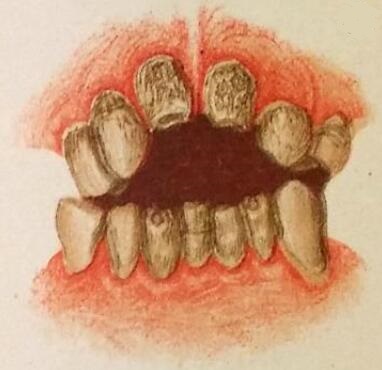
The first organomercurials appeared in the late 1880s. Mercury benzoate, which was slightly soluble in water, was one of several such compounds that were introduced in an attempt to reduce the irritancy and toxicity of inorganic mercurials by obtaining a slow, sustained release of mercuric ions from the organic complex. This was one of a few approaches to drug design at that time, as typified by the introduction of drugs such as chloral hydrate and urethane, which had been designed to release chloroform and ethanol respectively. A number of injectable organomercurials were subsequently marketed, including merbaphen, a double salt of sodium mercurichlorophenyloxyacetate with barbitone that was introduced in 1912 by F. Bayer & Company for the treatment of syphilis. Seven years later a novel use was to be found for it after Arthur Vogl, a third year medical student at the Wenckebach Clinic in Vienna’s First Medical University, had ordered a 10% solution of mercury salicylate to be prepared by the hospital pharmacy.13 When told that such a solution could only be prepared as an oily injection, Vogl accepted a colleague’s offer of merbaphen injection and duly proceeded with the treatment. As the nursing staff were meticulous in maintaining records of their patients’ progress, the amount of urine voided by every patient was routinely entered on a chart. Vogl saw at once that after receiving her first injection of merbaphen, his patient’s 24 hour urine output increased to 1200 ml from a mere 200–500 ml noted previously. After the third daily injection, this increased to 2 litres! On interruption of the treatment for a few days, the urine outflow decreased, only to rise on resumption of the injections. Vogl then administered merbaphen to another syphilitic patient, in whom the disease had damaged the heart, causing advanced congestive heart failure. Conventional diuretics had been tried on this man without success. Vogl found that after receiving the injection, his patient passed a massive amount of almost colourless urine. The flow continued throughout the day and the night and by the next morning he had eliminated over 10 litres. A similar profound diuresis was produced in other patients when injected with merbaphen, but not when they were given other antisyphilitic mercurials which were found to lack the potent activity of merbaphen. A thorough clinical evaluation was then carried out by Paul Saxl.14 This transformed the treatment of the severe oedema of congestive heart failure. By removing so much fluid, the pressure on the heart was relieved, allowing it to recover normal function. None of the many substances previously used as diuretics had anything like comparable activity. Nevertheless, it was soon recognised that merbaphen injections posed a risk of severe kidney damage or even fatal colitis. It was quickly superseded by another antisyphilitic agent, mersalyl, which was administered on an intermittent schedule to minimise toxicity.
The diuretic action of mercury was originally observed long before its rediscovery in the Wenckebach Clinic. It had been employed by Paracelsus in his treatment of dropsy, but it was not until the late nineteenth century that mercury and mercurous chloride were introduced as oral diuretics. Tablets combining finely dispersed metallic mercury with digitalis (a cardiac stimulant) remained on the market until rendered obsolete by the introduction of the thiazide diuretics in the 1950s.
You may like
Related articles And Qustion
Lastest Price from Mercury manufacturers
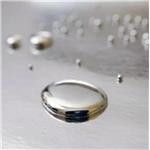
US $190.00-180.00/kg2024-12-02
- CAS:
- 7439-97-6
- Min. Order:
- 100kg
- Purity:
- 99.9%
- Supply Ability:
- 5 Ton
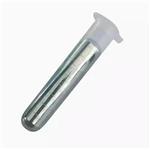
US $190.00-182.00/kg2024-12-02
- CAS:
- 7439-97-6
- Min. Order:
- 345kg
- Purity:
- 99.9%
- Supply Ability:
- 5 Ton
